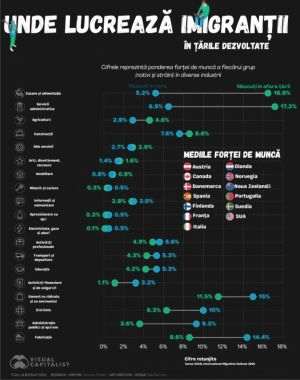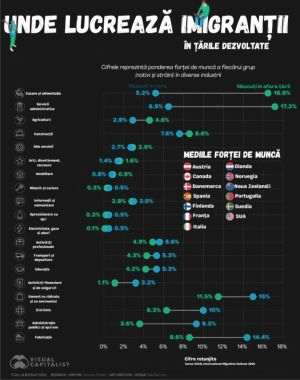Reporter: According to the European Federation of Stock Exchanges (FESE), the Bucharest Stock Exchange is the second largest in Eastern Europe, above the stock exchanges in Hungary and the Czech Republic, but the value of transactions is significantly lower• . What would be, in your opinion, the reasons why this situation exists?
Sorin Petre, Raluca Capaţina-Stoica: Indeed, BVB is the second largest stock exchange in Eastern Europe, with a market capitalization of more than 70 billion euros (considering shares listed on the Regulated Market and SMT) in May. Moreover, if we analyze the sample data provided by FESE for the Central and Eastern Europe (CEE) region, then the Bucharest Stock Exchange ranks third at the regional level, after the stock exchanges in Poland and Greece. Therefore, the position of the BVB in CEE is to be appreciated considering the weaker macroeconomic context of Romania compared to the other countries in the region.
In terms of liquidity, we can say that the Bucharest Stock Exchange has registered significant increases in recent years, so that in 2023 liquidity on the main share segment increased by 91% compared to the previous year, reaching a daily average of 19.7 million euros. An important factor that supported the increase in liquidity in 2023 was closely related to the listing of the Hidroelectrica company (IPO H20 being the largest in Europe in 2023). The average daily liquidity in 2024 is 13.9 million euros, below the record recorded in 2023, but increasing by more than 35% compared to 2022. The value of transactions on the BVB is significantly lower compared to that on the stock exchanges in Hungary and the Czech Republic, and a potential factor is related to the actual free float of listed companies. The free-float is reduced and getting smaller as a result of the impressive increase in the net assets of private pillar II pension funds (+31% in 2023 compared to 2022), reaching EUR 25 billion in net assets , with an equity exposure of 23% in 2023.
Private pension funds have a medium to long-term investment strategy, which mostly involves stock accumulation. In the absence of new free-float of listed shares or IPOs of significant size, this leads to a reduction in the real free-float of the capital market and implicitly to a reduction in average daily liquidity.
It is also worth noting that the capital market in Romania had in recent years, with the exception of periods of high volatility caused by the pandemic and the outbreak of the war in Ukraine, a positive period in terms of yield, the BVB companies thus proving that they are both resilient and performant. If we analyze the last five years (the period May 24, 2019 - May 24, 2024), the performance of the BET index has doubled (116%), and that of the BET-TR index (which includes dividend reinvestment) has tripled (202%). This performance rather favored a strategy of stock accumulation (buy and hold), a fact that also contributed from this perspective to the free-float reduction trend.
Reporter: After the listing of Hidroelectrica, the chances that the Romanian capital market will become emerging in the MSCI hierarchy have increased. How close do you think the market is to achieving this goal? What do you think should be done in this regard?
Sorin Petre, Raluca Capaţina-Stoica: The listing of the Hidroelectrica company significantly increased the chances of the local capital market to obtain emerging market status from MSCI as well (BVB being considered emerging by FTSE Russell since September 2020), thus there is a new company relevant dimensions that support the transition to the new level. In order for the Romanian stock market to be promoted to "emerging" status, at least three listed companies must meet the size and liquidity criteria established by MSCI. After the listing of Hidroelectrica, there are four companies on the BSE that meet MSCI's size criteria, but consistency in liquidity is still needed.
We believe that we are getting closer to achieving this goal, especially in the context in which, this year, new listings of entrepreneurial companies are expected on the BVB, which will attract increased liquidity.
Reporter: How are the main companies from the Bucharest Stock Exchange evaluated, through the prism of multiples, compared to the companies in the important markets of Western Europe? What would be the explanations?
Sorin Petre, Raluca Capaţina-Stoica: The companies listed on the BSE are valuable companies, but which have lower financial multipliers (e.g.: the P/E multiplier) compared to those in Western Europe, probably as a result of perceived risks, relative volatility the Romanian market and macroeconomic conditions. Furthermore, Western European capital markets are mature capital markets with listed companies of significant size (market capitalization, average traded value) and offering consistent returns/dividends.
Although the yields offered at BVB can be attractive (they vary according to the sectors), it must be taken into account that Romanian companies face higher perceived risks (compared to those in Western Europe), including political instability, changes in regulation and currency fluctuations.
According to the seventh edition of the report "Valuation multiples of companies listed on the Bucharest Stock Exchange and of the local mergers and acquisitions market" carried out by PwC Romania and which will be published in the next period, the P/E multiple at aggregate level was 10.5x, with a low in the financial sector (7x) and a high in the consumer goods sector (16x). Based on the most recent analysis published by World PE ratio, in Western Europe, the P/E value (median) of listed companies in Austria, Belgium, France, Germany, the Netherlands and Switzerland was 16x (over the average level registered by Romanian companies).

Reporter: What are the main advantages/disadvantages between financing/transactions through capital market mechanisms versus private equity?
Sorin Petre, Raluca Capaţina-Stoica: One of the main differences between the two types of financing is the fact that through the capital market, companies listed on the BVB through IPOs usually attract passive investors, while financing through funds of the type private equity (PE) attracts active investors (who actively participate in business decisions) for unlisted private companies.
PE funds are more geared towards acquiring a majority stake, while stock deals are more aimed at minority holdings. So by listing on the stock exchange, companies benefit from increased visibility on the market and have greater freedom in terms of using the capital raised. Also, another advantage of listing on the stock exchange is the market valuation of the company (the price per share being estimated in market terms). In addition, the company listed on the stock exchange thus obtains a certain degree of liquidity and a diversification of funding sources. In contrast, in the case of the PE mechanism, the price for the targeted shareholding is set internally, sometimes making it difficult to identify suitable investors and attract the planned financing, which can make it difficult for the PE investors to exit later.
In Romania, companies listed on the BSE must obey the rules imposed by the Financial Supervisory Authority (ASF) and meet certain transparency criteria. If the rules imposed by the ASF are violated, there are certain sanctions to which the management and the company are subject. In addition, shareholders can challenge managers' decisions. In the case of companies in which PE investments are made, the regulatory framework is less complex vs. the one on the stock exchange, the companies concerned having the obligation to adhere to the law of commercial companies, and the transactions are confidential.
In some cases, the listing process may be more expensive, involving commissions requested by the broker, the fee related to the listing process and other expenses (eg: audit, marketing, lawyers, etc.). On the other hand, companies that join PE funds must change their structure to a joint-stock company and are subject to other costs (eg: audit, with lawyers, etc.).
Reporter: How different are the valuations of companies when transactions take place through the capital market versus private equity in Romania? What would be the explanations?
Sorin Petre, Raluca Capaţina-Stoica: The evaluation of companies on the BSE takes place before the listing process, there are several evaluation methods. After listing, the estimated value of the company becomes its market capitalization. For example, if the company's valuation is done by the broker assisting the entire IPO process, the price can be set either as a single value or between a range of values. If at the time of the IPO that company is overvalued, after trading begins, the valuation (market capitalization) may decrease. Furthermore, it is not known with certainty whether investors will subscribe to that offer. Thus, the price at which the daily purchase-sale operations of the shares took place has an impact on the capitalization of the respective company, being influenced by "market forces".
Most PE funds are usually based on partnerships with institutional investors (banks, insurance companies, etc.), and the main purpose of these funds is to invest in various private companies - either for their growth (small companies) or for their development and expansion (medium and large companies). After a determined investment period, for example an average term of five years, the PE fund will exit the respective business ("exit"), recording the related profit. Compared to the valuation of listed companies, in the case of companies that adhere to PE financing, the share price is estimated through direct negotiations/discussions between the seller and the buyer and not through the market, and the valuation can remain confidential once a deal is concluded.
Reporter: What are the main trends you have noticed among entrepreneurs and companies in Romania in recent years?
Sorin Petre, Raluca Capaţina-Stoica: According to the data published by BVB, the local stock exchange enjoyed a large number of listings of both entrepreneurial companies (40 companies listed from 2019 to date both on the Regulated Market and on AeRO, taking into account and the IPO of Premier Energy), as well as bonds (approximately 90 corporate bond listings on both the Regulated Market and AeRO). 2021 was a year of many entrepreneurial listings, but worsening macroeconomic conditions and increased market volatility as a result of the war in Ukraine, coupled with an increase in the monetary policy interest rate to a fourteen-year high, led to a slowdown in listings during next.
In the first half of 2024, an IPO of significant size (approximately 140 million euros) was successfully completed, namely that of Premier Energy, which, according to BVB data, is the largest IPO of an entrepreneurial company in the last five years. This is a good signal for the capital market in Romania, which receives a new confirmation that there is interest from investors for new IPOs.
Reporter: What would be the main legislative changes that, from your point of view, would help the development of the capital market in Romania?
Sorin Petre, Raluca Capaţina-Stoica: The capital market in Romania does not necessarily need legislative changes at this moment to be more attractive. From a fiscal point of view, there is already a framework that encourages the participation of the population in the capital market by making investments (being here the tax on income from capital gains of 1% for holdings longer than one year and 3% for holdings less than one year, especially since the tax is withheld at source, thus considerably reducing the bureaucratic burden).
If we talk about what the Romanian State could do more, here we believe that there would be a need for the listing of new stakes in the companies in the state's portfolio - we are talking about both companies that are not yet listed, as well as sales of new stakes at listed companies where the free float is still small, such as Romgaz, Nuclearelectrica or Hidroelectrica. Through such an initiative, supported by the demand observed on the capital market from both local and foreign institutional investors, the liquidity of the Bucharest Stock Exchange will certainly increase.
Reporter: Thank you!
Note: According to FESE, at the end of April, the Bucharest Stock Exchange was the second largest in Eastern Europe, with a total capitalization of local companies (excluding Erste Group Bank) listed on the Regulated Market of 47 billion euros, more than the Budapest stock exchange (37 billion euros) and the Prague Stock Exchange (30 billion euros). But the daily average of transactions in shares of local companies on the BSE was around 11 million euros in April, compared to 29 million euros in Budapest and almost 13.8 million euros in Prague. Over time, the values differ from month to month, but the general idea remains - the BSE is a larger stock exchange than Budapest and Prague, but with fewer transactions.


























































